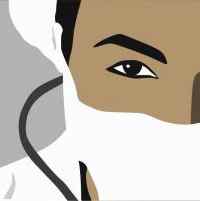
By Christine Vestal and Michael Ollove, Stateline
Here’s a look at how the crisis has affected some of the most vulnerable segments of the non-hospital health care industry:
Outpatient Surgical Centers
Some 9,300 outpatient surgical providers have been ordered by states to halt all but medically urgent procedures.
That’s meant a 70% to 100% drop in revenue for many surgical centers, said Bill Prentice, CEO of the Ambulatory Surgery Center Association.
Closures stemmed from concerns that these typically small, independently owned surgery centers would otherwise use medical supplies that are in short supply and needed by hospitals, and they would be unable to physically distance their patients.
Many of the nation’s surgery centers also have been asked to prepare for potential overflow surgeries from hospitals inundated with COVID-19 patients. But according to Prentice, very little of that has happened.
Instead, many surgical centers have closed their doors and furloughed employees, while others are operating at dramatically reduced capacity.
Touting prices that tend to be half of what hospitals charge and much shorter scheduling times, these specialized centers are one of the fastest-growing segments of the health care industry.
They provide arthroscopic knee and shoulder surgeries, pain management injections and cataract removal, as well as preventive and diagnostic care such as biopsies and colonoscopies, port placements for chemotherapy patients, wound care and a wide range of other same-day procedures.
With so many people staying at home right now, Prentice said, “it’s a shame we can’t provide the procedures they had scheduled because they have plenty of time to rest and recover.” There’s a lot of tension right now between patients and their doctors over when their surgeries can be rescheduled. “A lot of patients are very frustrated,” he said.
When the crisis wanes, surgery center owners worry that patients with previously scheduled procedures will have to go back to work and won’t be able to take time off for the procedures, Prentice said. There’s also concern that many won’t get their jobs back and won’t be able to pay for surgery without employer-sponsored insurance, he said.
At the same time, some surgery centers may have difficulty managing a flood of patients who want to move forward with their procedures once restrictions are lifted, particularly if the centers have donated medical supplies, including costly anesthesia equipment, to local hospitals, he said.
“All of these unknowns have created a lot of fear and trepidation in the health care market that we need to sort our way through,” Prentice said.
In Fort Collins, Colorado, Rebecca Craig, a surgical nurse who owns Harmony Surgical Center, said she expects a smooth reopening when the time comes. But if that doesn’t happen by June 1, she said, her business will be at serious risk of closing.
Harmony is a multispecialty facility with four procedure rooms and 103 employees who serve about 16,000 patients a year — 80 to 90 a day. Now the center is serving 10 to 12 patients a day, Craig said.
Nearly all of Harmony’s employees, mostly registered nurses and a smaller number of surgical and radiology technicians, are working half-time or less. They’ve mostly been able to get unemployment checks, she said. The surgeons who practice at Harmony are all independent, Craig said, and many of them have had to lay off staff or cut their hours as well.
“The question,” she said, “is ‘How long before we have to cut back even further?’ This can’t last longer than June 1 for us to stay in business. It will get to a point where we either have to go to a bank and get a loan or close our doors.”
Community Health Centers
The nation’s more than 13,000 community health centers have been hit hard. According to a survey published this month by the U.S. Health Resources and Services Administration, nearly 2,100 of those centers have closed at least temporarily as a result of the current outbreak, in part because their employees were unable to work because of family responsibilities and lack of personal protective equipment.
According to the National Association of Community Health Centers, nearly a quarter of community health center patients were uninsured in 2016 and roughly half were on Medicaid, the federal-state health plan for Americans living in poverty.
The crisis is expected to result in a 60% drop in the volume of patient visits to community health centers over the six months following the Trump administration’s March 13 national emergency declaration, according to a survey conducted recently by the association and sister organizations.
That’s likely to cost the centers $7.6 billion in revenue, even as most have quickly ramped up their telemedicine services to give patients an alternative to face-to-face visits.
The association said that the $1.4 billion Congress has provided so far in emergency COVID-19 funding to community health centers is not nearly enough. It is not clear whether the new emergency package Congress is debating will include more money for the centers.
Ron Yee, the association’s chief medical officer, said that even with some congressional emergency COVID-19 money for the health centers and small business loans, some community providers will not survive.
South Carolina’s Beaufort Jasper Hampton Comprehensive Health Services, which serves about 17,000 patients in three southeastern counties, is hoping not to be one of them.
But its revenue losses have been staggering, said Lonnie McIntee, the center’s chief financial officer. He estimates revenue is down by about 55%, and each week has looked worse since the crisis began in mid-March. “If it keeps going down, it’s nothing I can put my arms around,” he said.
To save money and protect patients and staff, Beaufort has consolidated clinics, at least partially closing five of its 11 sites and pulling staff into the remaining centers or sending them home to work remotely.
Much of the work is being done through telehealth, though some patients still go to the centers, where greeters check their temperature before they enter. Those with COVID-19 symptoms are directed back to their cars and are seen by a member of the triage team.
Some services such as dentistry have been shut down at Beaufort, and patients are staying away in droves for fear of exposure to the virus. Visits, even with increased use of telehealth, are down by half, McIntee said.
Beaufort’s clinics received an additional $1 million in emergency congressional COVID-19 funding. But in addition to a drastic drop in revenue, expenses are rising.
Beaufort has desperately tried to keep up its supplies, including personal protective equipment, said Chief Clinical Officer Faith Polkey. She said prices have skyrocketed.
“A box of N95 masks was $17.76 for 10 of them,” she said. “I spoke to a distributor who said the price is now $80 to $100, if you can even find them.”
The same situation repeats at health centers across the country. At Southside Community Health Services in Minneapolis, dental health accounted for 60% of revenue, said CEO Ann Cazaban. And except for emergencies, that revenue is now gone, she said.
She has laid off all but a skeletal crew from her 50-person dental staff and furloughed others. The future of the center is ominous, she said. “The longer this goes on, the bigger the risk of losing staff that were hard to recruit in the first place.”
School-Based Clinics
Community health centers run nearly half of the 2,600 school-based health clinics, and the rest are associated with hospitals, nonprofits and public health departments.
With schools closed, most of those school clinics, to which 6.5 million children have access, have closed, said Robert Boyd, president of the School-Based Health Alliance, a Washington, D.C.-based organization promoting medical services in schools. In most cases, he said, their staff was redeployed to their sponsoring agencies.
Many children, those from low-income families in particular, receive all of their medical care from school clinics. And while most children will do fine without health care in the span of time the clinics remain closed, Boyd said, the question is whether the clinics will ever reopen.
Ambulance Services
For private ambulance companies, which handle emergency calls for many jurisdictions in the United States as well as non-emergency transportation, revenue has declined 40% since the COVID-19 crisis took hold, according to the American Ambulance Association, which represents 600 ambulance services across the country.
Stay-at-home orders have paused many activities that resulted in emergency calls, such as traffic accidents and shootings, said Chris Anderson, director of operations for Bell Ambulance in Wisconsin. As for non-emergency transportation, many people want to avoid health facilities now if they can, he said.
Asbel Montes, a senior vice president with Acadian Companies, a Louisiana-based firm operating 500 ambulances in Louisiana, Mississippi, Tennessee and Texas, said emergency calls have dropped by 30% and non-emergency calls by 70%.
Many ambulance companies have furloughed EMTs and paramedics, he said. His company has not, but that may change.
“Six to eight weeks out, we’re going to have to make draconian decisions,” he said. “When you see a 50% to 60% drop in revenue, what do you think is going to happen?”
An insufficient ambulance workforce, he said, will mean longer and longer response times, which could translate to preventable deaths.
Medicare, unlike Medicaid, does not reimburse ambulance companies for serving patients unless they transport the patient. In many cases, he said, ambulance crews could stabilize people at the scene, perhaps in communication via telemedicine with a doctor, and avoid taking them to a hospital.
The industry has long pressed the U.S. Centers for Medicare and Medicaid Services to change the policy, without success. Montes said now would be the time, both for the sake of patients, who generally want to avoid hospitals, and to provide the reimbursement the industry needs.
Senior Day Care
Another worrisome health care service affected by the crisis is the senior day center, where senior citizens receive meals and routine medical care such as medication management and wound care.
Those centers have largely closed now, said Martha Roherty, executive director of Advancing States, an organization that represents state agencies that support aged and disabled populations. She said she hopes they aren’t neglected now when it comes to emergency aid.
“We want there to be senior centers for people to come back to,” she said.
Stateline, an initiative of The Pew Charitable Trusts.


